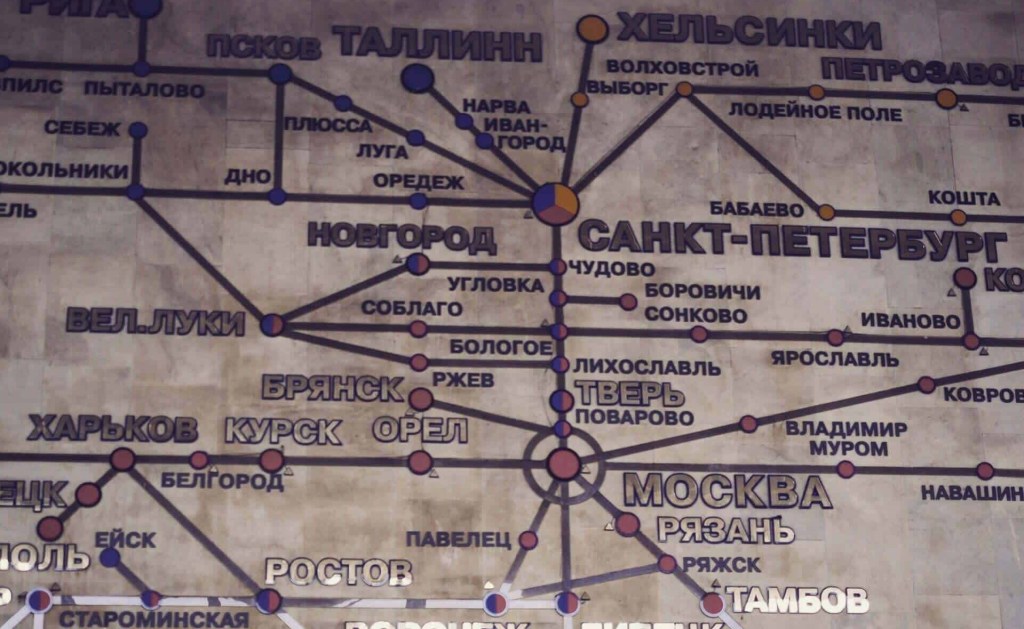 There’s always something new to say about Carl Gustaf Mannerheim. And I don’t mean lurid innuendo about his private life, or schmuck-baiting insinuations about his sexuality. Finland’s beloved Marshal is orbited by a publishing industry that now includes a Mannerheim cookbook and a Mannerheim comic, with a history that touches on a dozen countries. He was a truly cosmopolitan figure, the “last knight” of the Tsarist aristocracy and a hero of the nascent Finnish nation. He saw the prophetic trench conflict of that grotty little war between Russia and Japan over Manchuria, and he witnessed the twilight days of two empires.
There’s always something new to say about Carl Gustaf Mannerheim. And I don’t mean lurid innuendo about his private life, or schmuck-baiting insinuations about his sexuality. Finland’s beloved Marshal is orbited by a publishing industry that now includes a Mannerheim cookbook and a Mannerheim comic, with a history that touches on a dozen countries. He was a truly cosmopolitan figure, the “last knight” of the Tsarist aristocracy and a hero of the nascent Finnish nation. He saw the prophetic trench conflict of that grotty little war between Russia and Japan over Manchuria, and he witnessed the twilight days of two empires.
His epic ride across Asia in 1906-8 would have been the crowning glory of his career, were it not for the intervention of wider world events in his forties. But with a life overshadowed by his role in the Finnish Civil War and World War Two, his arduous reconnoitring of China remains largely forgotten. Across Asia, his mammoth account of his journey, was not published until 1940, and even then in a limited run of only 500 copies. It has taken until the 21st century for the scholar Harry Halén to publish a restored retranslation that brought Mannerheim’s Asian adventure to a wider audience, and several further years for someone to publish the inevitable companion, a modern travelogue that traverses Asia in Mannerheim’s footsteps – The Horse That Leaps Through Clouds: A Tale of Espionage, the Silk Road and the Rise of Modern China.
Author Eric Enno Tamm is a journalist with firm ecological credentials and no fear of rattling cages. Applying for a visa in Vancouver, Tamm finds his path blocked by Chinese officialdom, but this only spurs him even more to imitate his hero. Forbidden entry as a Canadian journalist, he wings it in true Mannerheim fashion, by travelling under an Estonian passport. And off he goes, through Turkmenistan, Uzbekistan and Kyrgyzstan, leaving a trail of irritated guides, furtive contacts and frustrated jobsworths behind him, contrasting Mannerheim’s accounts of Chinese militarism with his own 21st century perspective on what China is doing to its own environment and citizens.
Tamm’s quest is resolutely, bullishly inquisitive. He is arrested and interrogated by the Turkmen police before he even reaches China. He pokes his nose into the activities of clandestine missionaries, quotes harsh criticisms from named sources, and chronicles ecological disasters along the way. He has an eye for the fabric of life in Central Asia: not only the subtle exclusion of Muslim locals from a hotel restaurant that does not serve halal food, but also giggling tourists in shorts blundering around a sacred mosque, and the zealots who think they should be murdered for it.
His journey is riddled with historical coincidences and parallels. He enjoys the allure of “new bottles for old wine”, such as the paradoxical insistence of Maoist doctrine on blind faith, or the suggestion that the Red Guards who once smashed temples of Confucius could only become such fanatics after being raised in an essentially Confucian culture.
Like Mannerheim before him, Tamm travels undercover. He gets annoyed with his interpreters and jumpy in the presence of the Army, ever unsure who has shopped him and who is watching. But he also meets the movers and shakers of his age, and powerful evocations of the past, such as his encounter with the great-great-grandson of the woman Mannerheim knew as the Queen of the Alai Kirghiz. Tamm’s text fleshes out Mannerheim’s journey with historical contexts and adds data unknown in 1906.
Tamm’s habit of adding tangents, breaking modern conversations with historical musings and flashbacks within flashbacks, creates a knowing pastiche of oriental story telling. Like the legendary Scheherazade, Tamm delays explanations and often throws in punchlines after long diversions. It is endlessly entertaining, but also a means by which some issues are first postponed, and then conveniently forgotten. It is, for example, unclear to me how he evades the canny diplomat Wang Jiaji, who rumbles him in Urumqi, and asks straight-up if he is “the Canadian travelling in Mannerheim’s footsteps.”
There is much written about photographs taken and images seen, but these are oddly absent from the book itself, at least in this hardback edition. For the full experience of “reading” Tamm’s journey, one must also have a web browser open to his richly appointed website of parallel resources. Tamm has shown himself to be a shrewd manipulator of modern media, and offers Tweets, Facebookery and a blog to enhance the experience. One wonders if The Horse That Leaps Through Clouds awaits a true destiny, perhaps after its US appearance, likely awards and hopeful best-sellerdom, when foreign rights buyers decide to incorporate pictures by both Mannerheim and Tamm into editions in French, Russian, Swedish, or Finnish – the most likely territories to jump at the chance for translation rights. I don’t see it coming out in Chinese in a hurry, though Tamm will take that as a compliment.
Tamm undertook his journey in 2006, and must surely have been planning to publish in 2008, on the centenary of Mannerheim’s return from the Far East, or 2009, the centenary of Mannerheim’s report on China. Perhaps because of the publication of Halén’s revised book, perhaps for complex reasons to do with award qualification and publicity, The Horse That Leaps Through Clouds has an official US publication date of 2011, but has sneaked out in hardback in its native Canada several months early, offering an irresistible temptation to anyone looking for an exclusive Christmas present for the Mannerheim fan in their life.
The book alludes to James Palmer’s Bloody White Baron as forthcoming, and includes Paul Pelliot’s Carnets de Route in its bibliography, although it does not dig too deeply into Pelliot’s rich veins of anti-Mannerheim invective. All of which I take to mean that Tamm’s book was delivered to his publishers at roughly the same time as my own – I only squeezed Pelliot in during the revision stage. If so, this would explain why there is no mention of Mannerheim: President, Soldier, Spy in Tamm’s otherwise thorough bibliography. My book must have come out while his was going through galleys, which makes it all the more fun to find him elucidating points I only skim, or asking questions that my own book answers. Both of us break with tradition by making Mannerheim’s Asian trip the centrepiece of his life, contrasted with earlier writers who place WW2 in the foreground. Moreover, we are both unrepentant in our assertion that Mannerheim was a Tsarist spy, a concept that has been vigorously denied by at least one diplomat, although even at the time, I thought he protested a little too much.
The Horse That Leaps Through Clouds is an anti-travel book, a guide to places no tourist in their right mind would ever want to see. Its author departs for home literally sick of China, coughing and spluttering, plagued by headaches and recounting multiple intestinal upsets. One sees, perhaps, what one wants to see, and Tamm has little time for uplifting local colour or heartwarming encounters. A trained observer of the land, but perhaps not of the people, he reads the environment well, even if his access to its inhabitants is limited. His book is a damning account of a China that looms over our future, a “coal-fired dragon” vastly more threatening than the tinpot empire derided by Mannerheim’s 1909 report, part of the onrushing, dark, satanic crescendo that Tamm calls the “din of the modern world.”
Jonathan Clements is the author of Mannerheim: President, Soldier, Spy.
 Higanjima is a multiple pun in Japanese. It literally means Equinox Island, or the Yonder Isle, perhaps even The Island on the Other Side. However, as noted by the characters when they first arrive on the notorious “vampire island”, it is also a reference to higanbana (Lycoris radiata), the red-flowered spider lilies whose poisonous bulbs are sometimes strewn at the edges of Japanese farmhouses to kill mice. Flowering around the time of the autumn equinox, spider lilies have become associated in Buddhist tradition with the onset of winter, and hence the threshold between life and death. They should never be presented to a living person.
Higanjima is a multiple pun in Japanese. It literally means Equinox Island, or the Yonder Isle, perhaps even The Island on the Other Side. However, as noted by the characters when they first arrive on the notorious “vampire island”, it is also a reference to higanbana (Lycoris radiata), the red-flowered spider lilies whose poisonous bulbs are sometimes strewn at the edges of Japanese farmhouses to kill mice. Flowering around the time of the autumn equinox, spider lilies have become associated in Buddhist tradition with the onset of winter, and hence the threshold between life and death. They should never be presented to a living person.
 With a gruelling shoot that spanned April 2007 to September 2008 after its leading man’s injury on set, filmed in the sub-tropical heat of Japan’s idyllic Ryukyu island chain,
With a gruelling shoot that spanned April 2007 to September 2008 after its leading man’s injury on set, filmed in the sub-tropical heat of Japan’s idyllic Ryukyu island chain, 
 There’s always something new to say about
There’s always something new to say about 

 It was an inspiring, wonderful day, and fired all of us up with thoughts of Finnishness and Karelianism, and the glorious, quixotic mindset that bootstraps a revolution and an entire country out of a book of poems. Ellen, I know, is already percolating ideas around for a story based on her experiences; Delia is sure that something fictional will come of it in her own work… and so am I.
It was an inspiring, wonderful day, and fired all of us up with thoughts of Finnishness and Karelianism, and the glorious, quixotic mindset that bootstraps a revolution and an entire country out of a book of poems. Ellen, I know, is already percolating ideas around for a story based on her experiences; Delia is sure that something fictional will come of it in her own work… and so am I.